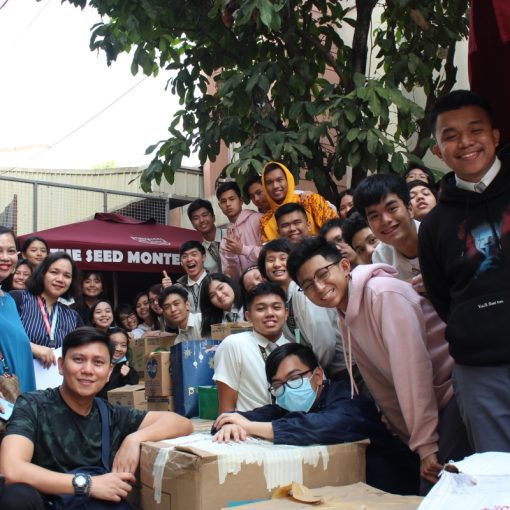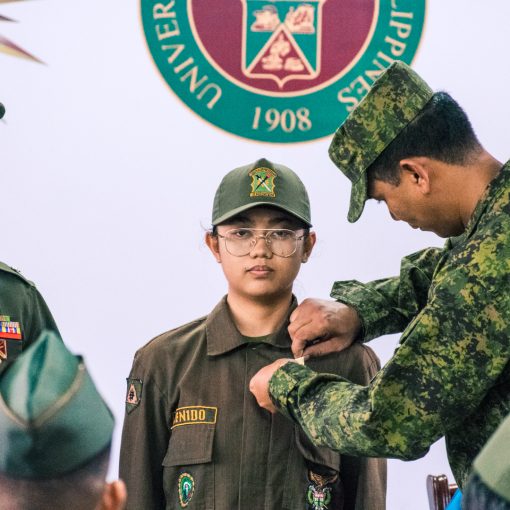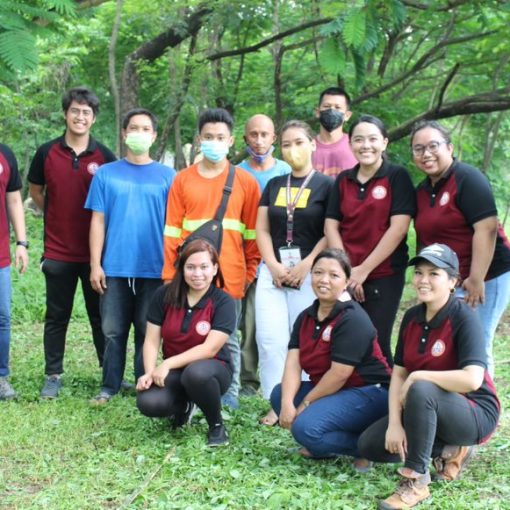On Monday, January 11, 2020, the webinar series UNLAD: Para kanino? Talakayan ukol sa pagbubuo ng mga proyektong pang-kaunlaran ng komunidad was officially launched. It was spearheaded by the first webinar of the series, Principles of a People-Centred Development. The webinar was attended by more than a hundred participants. It was welcomed by the NSTP Director Sir Dennis Quilala. He reminded everyone to uphold the query asking for whom the development is. He emphasized the importance of maintaining critical lenses and programs to implement. Moderated by Sir Giovanni Francis Legaspi, the webinar revolved around social issues and stressed the importance of people-centred development in addressing these issues.
The first speaker, Professor Venarica Papa, is an Assistant Professor in the College of Social Work and Community Development. Professor Vena’s research interests include human and people’s rights, community governance, and alternative development. She started by defining what poverty and development means. Poverty was perceived by some as a product of destiny or luck. Some say that poverty was a result of idleness or just because one is a failure. The participants were reoriented that this way of thinking disregards the existence of structural barriers that hinders one to attain development, regardless of their determination, skills, and perseverance. This also forces the poor to accept their condition because it is what it is. Development was defined as a desirable state that was intentionally strived for. It is not something that one passively waits for. It was also emphasized that in development, questions as “What [is it]”, “Why [it was done]”, “How [it was done]”, “[it was done] By whom]” and “For whom [it was done]” are crucial questions to consider in formulating development projects.
Professor Vena then proceeded to discuss what people-centred development means. People-centred development is the development “of the people, for the people, and by the people”. It highlights that development happens when people realize their condition and their capability to take part in making decisions that concern them. It is when groups of people who recognize and accept their right and responsibility to make decisions and act upon their own development are formed. It promotes development that is secure and sustainable with due importance to the accountability of those in authority. As Professor Vena says it, people-centred development is “tuloy-tuloy na proseso ng pag-aaral, pagdaranas, pagsusuri, pag-aksyon at muling pag-aaral, pagsusuri, pagdaranas”. People-centred development should uphold principles that are empowering and participatory. Just like how she cited misconceptions about poverty and development, she also mentioned misconceptions about empowerment and participation. She mentioned how people often fall into traps of the shallow definitions of these terms which compromises and hinders the development. She mentioned how conscientization is an essential part to empower people. Lastly, Professor Vena delved into another principle of people-centred development which is the “bias for the poor and the marginalized”. For a development to be centered on people, one must know the people. It was emphasized that for development to be truly people-centered, the people must be appreciated and understood. Understood — one must know where they are coming from. It is important to look into the historical perspective of their condition. One must understand their context. Appreciated — one must acknowledge and trust that the people of the community have their own processes, systems, and skills.
A lesson is best understood by examples. The next speakers, Sedric Suniga and Teddy Olarve, provided the participants such when they presented case studies about two urban poor communities. Suniga and Olarve are from the Junior Philippine Geographical Society – UP Diliman, an academic and socio-civic student organization based in the College of Social Sciences and Philosophy of UP Diliman. The speakers discussed one of the projects of their organization called “Contour: Mapping for the People”. Its objective evolved from being a community tour that visits communities to communicate with the members of the community to being a comprehensive project that aims to interrogate and criticize various development narratives. This objective was attained by “represent[ing] the everyday geographies”, which was defined as the lived experiences of the members of the community; “document[ing] oral histories”, “amplify[ing] calls for justice”, which was mentioned to be the most important”; and lastly by “build[ing] stronger alliances” which was to be done by supporting and advocating for the calls of the community. The importance of community consultation was given emphasis by Suniga. It was mentioned that through this the developer will get to know the community and at the same time the community will get to know the organizers.
Olarve then proceeded to discuss the method they had done for the project which is the Children’s Mapping. Children’s Mapping requires the participation of children in the community. This method aims to listen to and include children in the decision making process for the development projects in the community. Olarve mentioned how children are often disregarded or neglected in the process of decision making. He, however, emphasized that this should not be the system. Children are affected also by these developments and for developments to be inclusive and be for all, children’s perspectives should be considered. He also reoriented the participants that children, in contrast to the dominant belief, are aware of what is happening in their community and of what their needs are. Children’s Mapping involves making the children draw a map of their communities and their dream houses. Children’s awareness of their needs and situation is highlighted by their drawings.
Suniga and Olarve mentioned several hindrances and tendencies of student organizations. The tendency to develop projects that are self-serving and aims just to make one’s own name good, the tendency to impose preconceived projects on the community instead of basing the project on the real needs of the community, and the tendency to cling on the shallow meanings of inclusive and participatory are mentioned to be hindrances to full implementation of people-centred development. Hindrances such as limited money, time, and resources were also mentioned. It was also stated how their organization experienced a challenge in sustaining the enthusiasm and ensuring the participation of the children and how they were able to overcome it.
The last part of the webinar is the open forum where questions from the participants were answered by the speaker. One of the questions asked recognizes the crisis we are currently facing, the COVID-19 pandemic, and its added struggle to implement people-centred development projects. Suniga answered that, in the midst of a pandemic, one should still observe that the projects were inclusive and participatory. In this, he highlighted that communication holds an important role in project implementation. Both Professor Vena and Sedric Suniga emphasized the capabilities and knowledge of the community to organize and to self-actualization. Suniga said that we should not act as their voice but rather what we need to do is to recognize they have a voice and to amplify their calls.
The webinar was concluded through a closing remark done by Sir Giovanni. He reiterates the important lessons mentioned by the speakers and mentioned that these lessons can serve as an inspiration and guide for the future projects of the NSTP, the community, the reservist, and volunteers to be people-centred.
by Abegail Panghulan





